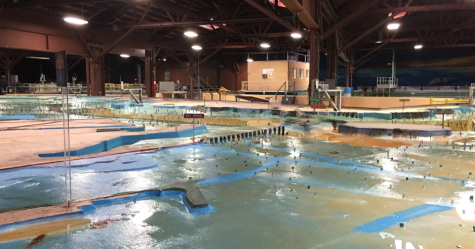Anotter Problem
One of the most highly endangered animals on the planet is the sea otter. The sea otter typically lives along the coasts of the northern and eastern North Pacific Ocean. Since around 1741, sea otters were hunted for their soft, beautiful pelts. Because of this, as well as oil spills and habitat loss, the sea otter has long been considered endangered for the past eight-five years. Incidents such as the 1989 Exxon Valdez oil spill in Alaska’s Prince William Sound have killed several thousand sea otters. The sea otter, one of the most intelligent animals on the planet, are known for their playfulness and cuteness. They even use tools, such as smashing rocks to get meat out of a shell.
When the sea otters’ numbers reached a low of two thousand, the International Fur Seal Treaty was passed to protect them. Ever since then, rescue groups and people across the world have been fighting to help the sea otters regrow their population. The SOPP, Sea Otter Protection Plan, was established this year by a Sacred Heart Cathedral student named Nick Mussman. He believes in fighting for the cause because “We’re trying to create a better world for the otters so they’re not always looking over their shoulders for extinction to come bite them in the butt like the dinosaurs.”
I took a trip to the Marine Mammal Center in Sausalito a few weeks ago with Nick Mussman. He explained the trauma and things the otters must go through to be rehabilitated. And they are needed to be rehabilitated mainly because of humans and our actions, since humans are the sea otters’ number one predator. Due to these surroundings, a sea otters’ life expectancy has been shortened from 25 years to 10 to 12 years in the wild. In California, parasites and infectious disease have caused more than 40% of sea otter deaths. At the Marine Mammal Center, they have rehabilitated over 200 sea otters in the past 20 years.
There are many ways people are helping to save the sea otters. The population of sea urchins is being controlled because they feed on kelp, which is the sea otters’ natural habitat. People are boycotting companies that sell the furs/pelts of sea otters. With less people buying the furs, there is less of a need to kill the otters for it. In addition, boycotting and protesting offshore drilling will result in a lesser chance of oil spills. All these things are easy and simple to be a part of, but this is an issue that can only be solved in numbers. It requires the dedication and willingness to sacrifice your time and energy for the good of humanity. Humanity’s compassion for others is the one thing that makes us Human. It is wrong for humans to do these things to such intelligent, innocent creatures.
Too learn more about the cause, visit the Marine Mammal Center, research the problem, or watch the video created by SOPP. SOPP is continuing to grow and accept volunteers. They can always use more help, as this solution requires many people. The Marine Mammal Center is always asking for volunteers. Just pitching in an hour a month makes all the difference. We must all help fix our mistake that almost wiped out an entire species of living, breathing, intelligent creatures.





